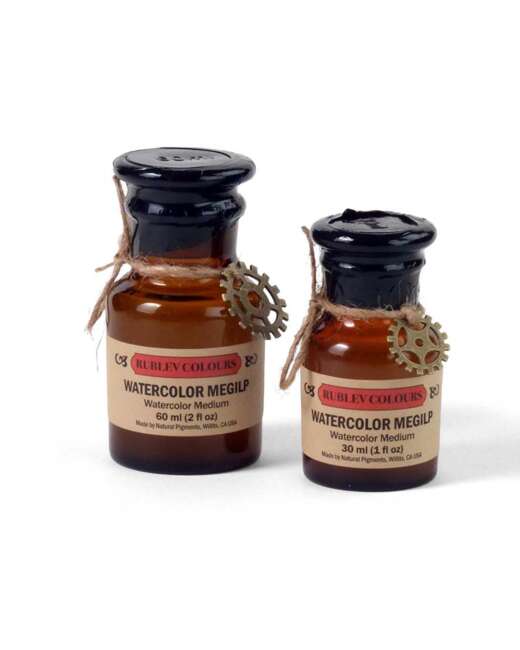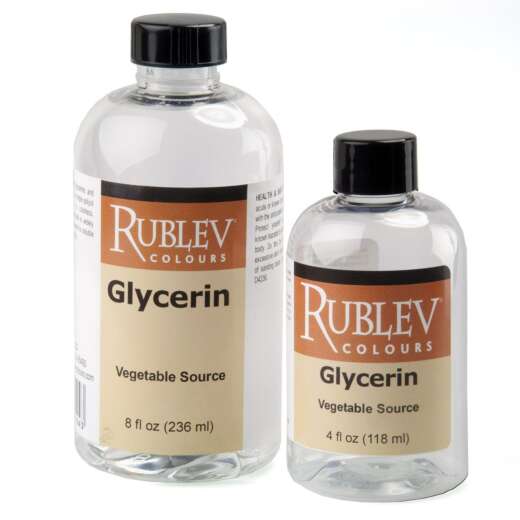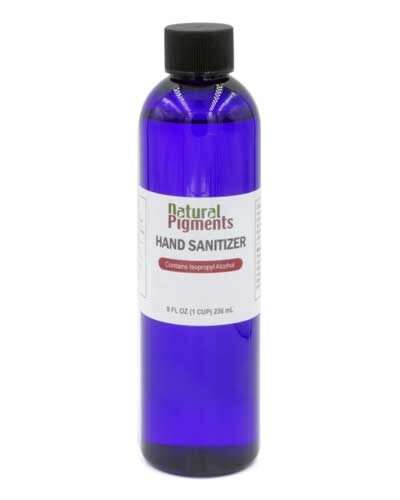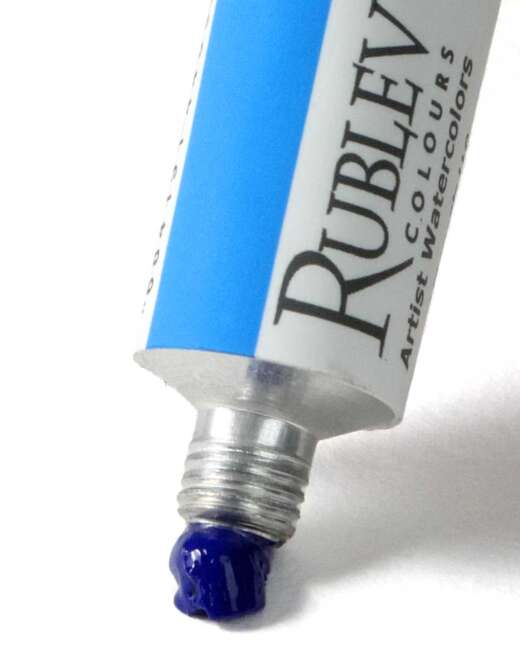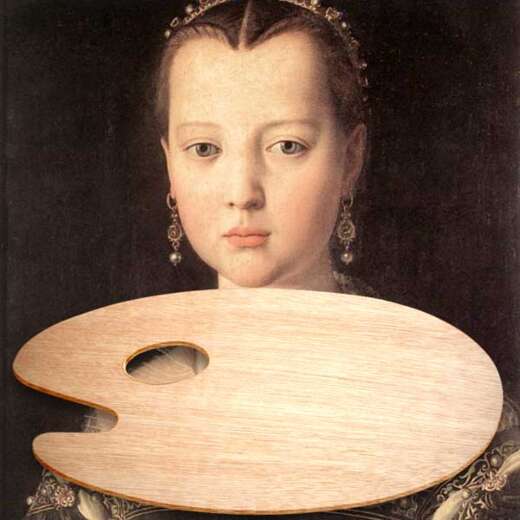Use of Glycerin in Historical Watercolors

Glycerin (also spelled glycerine and also called glycerol) is a simple polyol (sugar alcohol). It is a colorless, odorless, viscous liquid widely used in watercolors. Glycerin is soluble in water and is hygroscopic. The glycerin backbone is central to all lipids known as triglycerides. Glycerin is sweet-tasting and non-toxic.
Glycerin is a humectant and plasticizer ingredient in commercial watercolors today, but it is not always an ingredient in commercial watercolors. An examination of watercolor paints from the late 18th and early 19th century (we can call these historical watercolor paints) reveals that glycerin was not a plasticizer and humectant in pan watercolors (called ‘cake’ colors in that period). For example, Rudolph Ackermann (b. 1764–d. 1834), an Anglo-German inventor and publisher who operated a print shop and drawing school in The Strand, London, used crystal sugar melted in water as the plasticizer and humectant for many colors. In some cases, the recipes called for vinegar!
In 1779, Swedish scientist K.W. Scheele discovered glycerin through the hydrolysis of olive oil. Initially, glycerin was used to manufacture glue and cork, but over time, its uses extended to other products.
It was not until 1832 that William Winsor and Henry Newton, both painters, and chemists, are credited with inventing ‘moist’ watercolors—pans of color moist enough for the color to be lifted by the application of a wet brush. The ingredient that enabled them to produce moist watercolor cakes was glycerin, and this invention launched the company Winsor & Newton.
There are three types of glycerin: that derived from vegetable oils, such as soybean, corn, rapeseed, coconut, and palm; another derived from animal fat (tallow); and synthetic glycerin, derived from petroleum. Knowing which glycerin to use in artists’ paints is essential because animal-derived glycerin tends to yellow with time, especially if heated.
Sugar syrup and pale honey are two essential ingredients in Rublev Colours pan watercolors in keeping with the ‘moist’ cake watercolors used before the eighteenth century and in the early part of the nineteenth century. Glycerin and sugar syrup are ingredients in Rublev Colours tube watercolors to conform to the consistency of moist colors made in the early nineteenth century.



